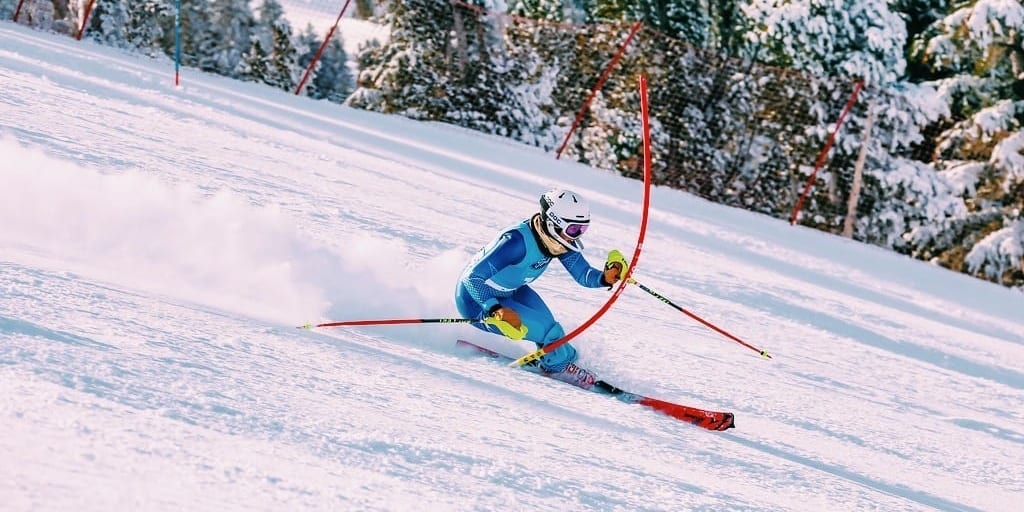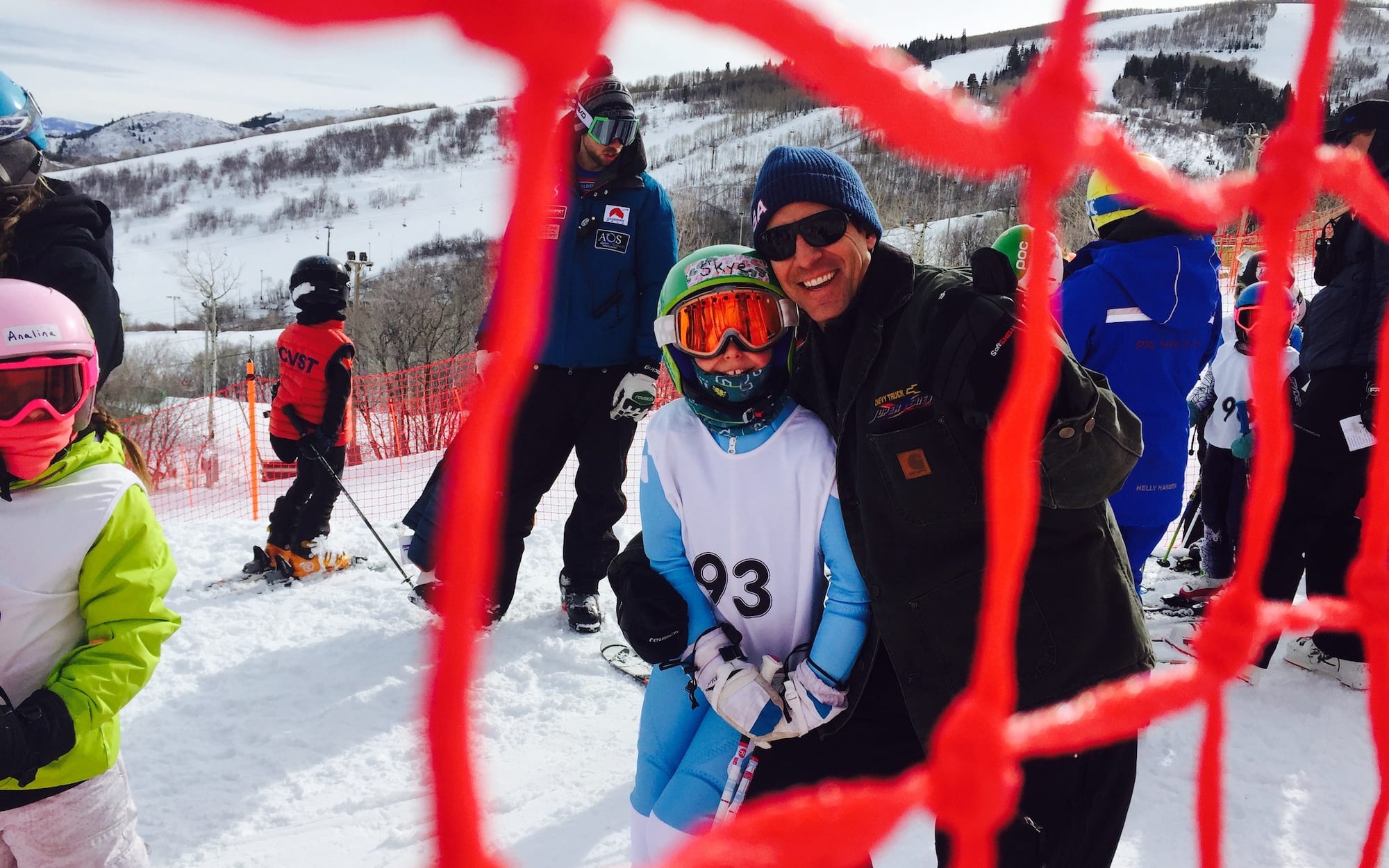How your ski club pulls off a training day
During a training session, have you ever looked down at the course in front of you and seriously wondered, “How did those gates get there?” If you’re anything like me, then maybe not, but I can promise you it was no simple feat.
There is a team of individuals working behind the scenes at every resort who must coordinate numerous things in order to make your daily training even possible, from the coaching staff to ski patrol, lift operators, groomers, all the way up to the mountain management.
“The process starts basically with the coach,” explains Squaw Valley Ski Team Athletic Manager Eric Garayoa, who oversees U programs for one of the country’s larger clubs. “The coach has their training schedule or their curriculum and then they put in their hill space request based on those needs.”
Garayoa says that the head coaches and administrators then meet and discuss requests to sort out conflicts before getting in touch with mountain management for approval.
The Squaw Valley Ski Team doesn’t have a dedicated training venue like some clubs and academies do, which allows Garayoa and his staff to utilize the mountain in its entirety but also means he needs to know precisely what he’s asking for in advance of training.

Squaw Alpine
“Ultimately, with the advantage of all of Squaw and Alpine (Meadows, also owned by Squaw Valley) being at our use is that we don’t have conflict,” he says. “We basically move a group to a similar venue where they can accomplish their needs.
In contrast to Squaw’s singular team training on the mountain, up to seven different programs can be vying for hill space simultaneously during the winter at Park City in Utah.
The Park City Ski Team, Summit Ski Team, Rowmark Ski Academy, the University of Utah, Westminster College, the National Ability Center, and at times the U.S. Ski Team all call Park City Mountain Resort home and must submit training requests roughly a month in advance to Karen Korfanta, Manager of Competition Services for Vail Resorts in Park City.
“When the requests all come in, I go through them and what I look for is two GS lanes and two slalom lanes to match in each session,” notes Korfanta.
Park City runs three sessions per day on its Eagle Race Arena from 9:00-11:15 a.m., 11:15-1:00 p.m., and 1:00-3:45 p.m. Also, teams can take advantage of early sessions from 7:00-9:00 am.. on Park City’s Payday run and late sessions from 4:00-6:30 p.m. in the race arena.
All of that can make for some complex organization and tough scheduling, but it seems to work out smoothly with early planning. “We have yearly plans in place and we just plug them in,” says Park City Ski Team Director Jesse Hunt. “It’s a busy place that has its pros and cons, but I think for the most part the mountain is doing a good job of trying to accommodate us and move the groups around.”
Hunt emphasizes that teams based in Park City are able to take advantage of alternate venues on the mountain when both scheduling and conditions allow, which provides some additional flexibility.
“It’s a partnership that really has little to do with money.” – Igor Vanovac
The Sugar Bowl Ski Team in Norden, Calif., and the Mount Mansfield Ski Club in Stowe, Vt., both have dedicated race arenas all season long, allowing for lots of control when it comes to who and what is allowed on the hill. “There are some formal agreements that we have with the resort,” explains Sugar Bowl Ski Team and Academy Head Tracy Keller. “One that I think is really important is that their CEO sits on our board of trustees and I sit on their board of directors.”
Keller says that this relationship really helps with the communication between the resort and the club and keeps both parties on the same page when big decisions need to be made. “We have the slalom arena, called the Van Ruiten Race Arena, where we typically share investments with the resort,” she adds. “For instance – snowmaking – and we recently put an automated snowmaking system in on the arena which allows us to get early-season snowmaking on the hill.”
Igor Vanovac, executive director of the Mount Mansfield Ski Club, echoes Keller with regard to his team’s relationship with Stowe and the dedicated training venue there.
“We have a strong partnership with each other,” Vanovac says. “They (Stowe Mountain Resort) believe that ski racing should be supported and they want to support it. It’s a partnership that really has little to do with money; they recognize that they are reaching out to the community at-large.”
Garayoa also believes that having the support of a community that boasts a rich ski racing heritage is an essential piece of the puzzle when it comes to building a successful program.
“We are so lucky out here to be involved with a mountain and a culture that celebrates the sport,” Garayoa adds. “I think there’s an underlying commitment and maybe pressure to support what we’re trying to accomplish. It’s really amazing to be a part of.”
But what about the snow itself? How does a program create the best possible conditions on its training hills for productive training sessions? In Squaw Valley and Mount Mansfield’s case, it’s an effective combination of strategic grooming and taking advantage of the natural weather patterns found in California’s Sierra Nevada Mountains and Vermont’s Green Mountains.

Team MMSC
“Between Kangaroo (at Alpine) and Exhibition (at Squaw), the sun exposure on those two venues basically gives us a 24-hour turnaround before they transition back into hard snow after a storm,” explains Garayoa of the California conditions.
“We could be ‘injecting’ the trail by opening up the surface during a rainstorm and then have the next day be below zero,” notes Vanovac of what he experiences in Vermont. “You’re just playing a game with the weather. On the East Coast, one day might be minus 30, and the other day can be 60.”
At Sugar Bowl and Park City, the ability to artificially water a dedicated training arena gives both areas the ability to create a firm surface that more or less lasts until a drastic change in the weather. Taking advantage of strategic grooming times and techniques also makes this possible.
It’s less coincidence than might meet the eye that some of the best American skiers of all time have come out of these programs. In many cases, the secret behind developing elite ski racers is not just quality instruction and athlete management, but also having the support of a mountain that is willing to do what it can to ensure the best on-snow opportunities so the gate bashers can pursue their dreams.





















